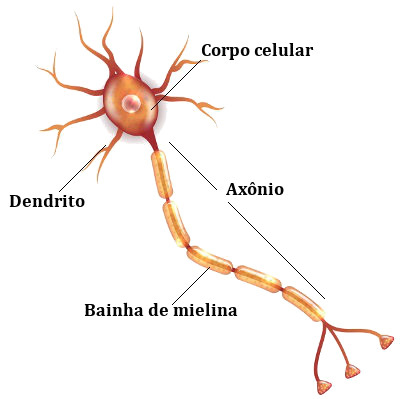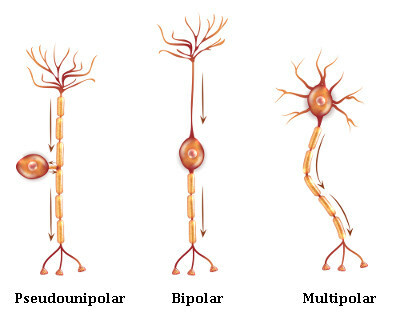You neurons they are cells present in the nervous system and their main function is to conduct the so-called nervous impulses. Although they are not the only cells in our tissue nervous, they stand out as the best known.
→ General characteristics of neurons
Neurons have as basic parts the cell body, dendrites and axon.
Cell body: The cell body is the region where the nucleus of the neuron is located, as well as most of its organelles. Its shape is varied and can be spherical, starry or pyramidal, for example.
Dendrites: They are very branched extensions responsible for receiving chemical signals from another neuron.
Axon: It is an extension responsible for transmitting signals to other cells, such as another neuron, gland or muscle. It is characterized by being longer than dendrites, reaching up to one meter in length in some species. In some neurons, the myelin sheath in the axon, which is produced by two types of glial cells: oligodendrocytes, in the central nervous system, and by Schwann cells, in the peripheral nervous system. The portions of the axon in which there are gaps in the myelin sheath are called
ranvier's nodules.

Look at the main parts of a neuron
Between a neuron and another cell, we find a junction called a synapse. In these places, are usually posted neurotransmitters that act in the transport of information from one neuron to another cell. The neuron that is passing the information is called presynaptic cell, and the cell that receives the signal is called postsynaptic cell.
→ Classification of neurons according to the number of prolongations
Neurons can be classified according to the number of prolongations into:
Bipolar neurons: have a dendrite and an axon;
Pseudounipolar neurons: they have a single extension, close to the cell body, which divides into two. In embryonic life, these neurons present themselves as bipolar neurons;
Multipolar neurons: they have more than two cell extensions and are the main type of neuron.

Main types of existing neurons
→ Classification of neurons according to their function
Neurons can be classified according to their function into:
Sensory or afferent: receive stimuli and send them to the central nervous system;
Interneurons: establish connections between one neuron and another.
Motors or efferents: they carry impulses from the central nervous system to other parts of the body.
By Ma. Vanessa dos Santos
Source: Brazil School - https://brasilescola.uol.com.br/o-que-e/biologia/o-que-e-neuronio.htm
